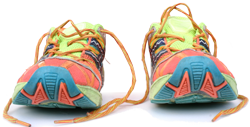Agenda
Purpose:
To update Shape Up Coalition Members about projects and community activities.
Discuss Shape Up Coalition meeting format, feedback, and evaluation.
Desired Outcomes:
To support the Shape Up Coalition Projects community activities.
To strengthen Shape Up Coalition meetings to benefit community partners involvement.
|
AGENDA |
||
|---|---|---|
|
1. Welcome/Introductions |
Christina Goette & |
2-2:10 |
2. SUSF Updates
|
Shape Up SF Staff |
2:10-2:30 |
|
3. SUSF Coalition Featured Presentation: |
Asha Mehta & Lara Sallee |
2:30-3 |
|
4. Literature Highlight: |
Marianne Szeto |
3-3:15 |
|
5. Member Announcements |
All |
3:15-3:30 |
|
6. Evaluation |
All |
Thanks! |
Minutes
Attendees: Asha Mehta, Lara Sallee, Nancy Leung, Susan King, Miriam Alper, Laura Brainin-Rodriguez, Michelle Loya-Talamantes, Patricia Norman, Greg Rosenberg, Gloria Thornton, Justin Stekoll, Amy Portello Nelson, Libby Albert, Marianne Szeto, Michelle Cleere, Patricia Erwin, Micha Berman, Josh Muxen, Miranda Besancon, Jeffrey Betcher, Jo Mestelle
Shape Up Updates
Walking Challenge Closing Ceremonies
-
Adult Ceremony at Potrero Hill Sports Basement – May 27. Come enjoy food, drinks, music, raffles. Sports Basement is also providing $200 to each team that finishes the Walking Challenge.
-
Kids Ceremony at Kezar Statdium – May 28 from 3:30-5:30. We need volunteers to staff activities. Contact anelson@dcyf.org for details and to sign-up. Carnival-themed event will also be kick-off for Soda Free Summer.
Soda Free Summer
Be Sugar Savvy Train the Trainer sessions coming up.
Dates and Times: April 22 (10-2) and May 5 (3-5)
Location: 1390 Market St., Suite 900, in The Mint.
This year, we have added an early childhood component centered around a children’s book called “Drink Water!” Said the Otter. We are looking for funding to print the book and toolkits that include “Did you know?” flyers, posters, stickers, letters, and activity sheets. If you have any ideas or connections with funders, please let us know or make that connection for us.
Party at the Zoo – April 18
SF Zoo is hosting a fair on environmental conservation and Shape Up will be there to promote Soda Free Summer, Bike to School Day, Shape Up information, and prizes. If you have materials you’d like us to promote and that are in alignment with their theme of conservation, contact anelson@dcyf.org.
Summer Lunch – deadline April 24
Free lunch for 8 weeks – from June 22 – August 15. Due to the many cutbacks and budget restraints, we are trying to branch out to new sites to host Summer Lunch. We’ve connected with YMCA. If you have any recommendations, please email libby@dcyf.org. Libby will send email with specific neighborhoods in need.
Sunday Streets – www.SundayStreetsSF.com
April 26, 9-1 from Aquatic Park to AT&T ballpark (which will be open to run bases).
May 10 – 10-2 from AT&T to India Basin and Third St.
June 7 and July 19 in the Mission. Route TBD.
August 9 and August 30 connecting Golden Gate Park to the SF Zoo
We need volunteers. Susan will send the volunteer request form to Shape Up listserv and asks that you please send to your networks. We are 70 volunteers short for the first event. If each supporting organization brought 10-15 volunteers, we’d have enough. The shifts are shorter so everyone can enjoy some of the programming.
Susan will check out onebrick and idealist.org.
Shape Up Coalition Survey
Thanks to those of you who participated in the survey. Please feel free to send us feedback at any time. We want to know that our meetings and e-blasts are relevant and useful to you.
Summary –
-
The current schedule and location are most convenient.
-
People are likely to attend the meetings for featured presentations, literature updates, legislative updates, Shape Up updates, member announcements and opportunities for networking.
-
People would like to see funding opportunities, healthy snacks, and information relevant to your organizations at future meetings.
-
Our Steering Committee will now be a virtual advisory body to open up to more participation. Thank you to the five new interested members. Marianne will contact you shortly.
Discussion – provide periodic updates on strategic plan progress.
Featured Presentation: Gateway to Fitness by Lara Sallee and Asha Mehta
Download presentation
Literature Review: Neighborhood built environment and income: Examining multiple health outcomes (PDF)
Purpose: To test associations of neighborhood built environment and median income to multiple health outcomes and examine whether associations are similar for low vs. high income groups.
Need for this study: A study in 2004 found that walkability was related to physical activity and obesity among whites but not blacks raised the possibility that not all groups benefit from walkable build environments. In order to eliminate health disparities, we need to understand whether walkability has similar associations with health outcomes in lower and higher-income groups. Some hypothesize that less walkable neighborhoods form fewer social bonds, inadequate social networks, which lead to depression.
Method:
-
Cross-sectional study of 32 neighborhoods in Seattle and Baltimore
-
Stratified by income and walkability
-
Conducted between 2001 and 2005
-
N=2199
-
Ages 20-65, but only 26% were ethnic minority
-
Walkable neighborhoods defined as having well-connected streets, non-residential destinations close to residences, and more active transportation such as walking and biking.
Health Outcomes:
-
Daily minutes of moderate to vigorous physiacl activity (MVPA) (objectively reported through accelerometer monitoring)
-
BMI – self-reported
-
Mental and physical QoL assessed with the SF-12 (12-item Short-Form Health Survey)
Conclusions:
-
MVPA is higher in high (vs. low) walkability neighborhoods, but not by income.
-
Overweight/obesity is lower in high-walkability neighborhoods
-
Physical QoL is higher in high-income neighborhoods, but this is unrelated to walkability.
-
Living in walkable neighborhoods had higher levels of physical activity whether you had high or low income, BUT higher-income neighborhoods had lower BMI and higher physical QoL.
Walkable neighborhoods are not enough – we need policies to avoid negative outcomes, especially among low-income populations.
What are the implications of this study on our work (not just Shape UP, but your organizations as well) to create environments that make it easy for people to be physically active?
Member Announcements:
-
Feeling Good Project – “Pick Me” posters are up in MUNI and light rail
-
The Childhood Obesity Taskforce presents a multidisciplinary training: Childhood Obestity 2010: The next generation of prevention and management
Date: Febrary 27, 2010 @ Milton Marx Conference Center. Planning meeting on 4/16 @ 9:30, 30 Van Ness Ave., Room 252. Science-based information lnking to practical outcomes and skills.


